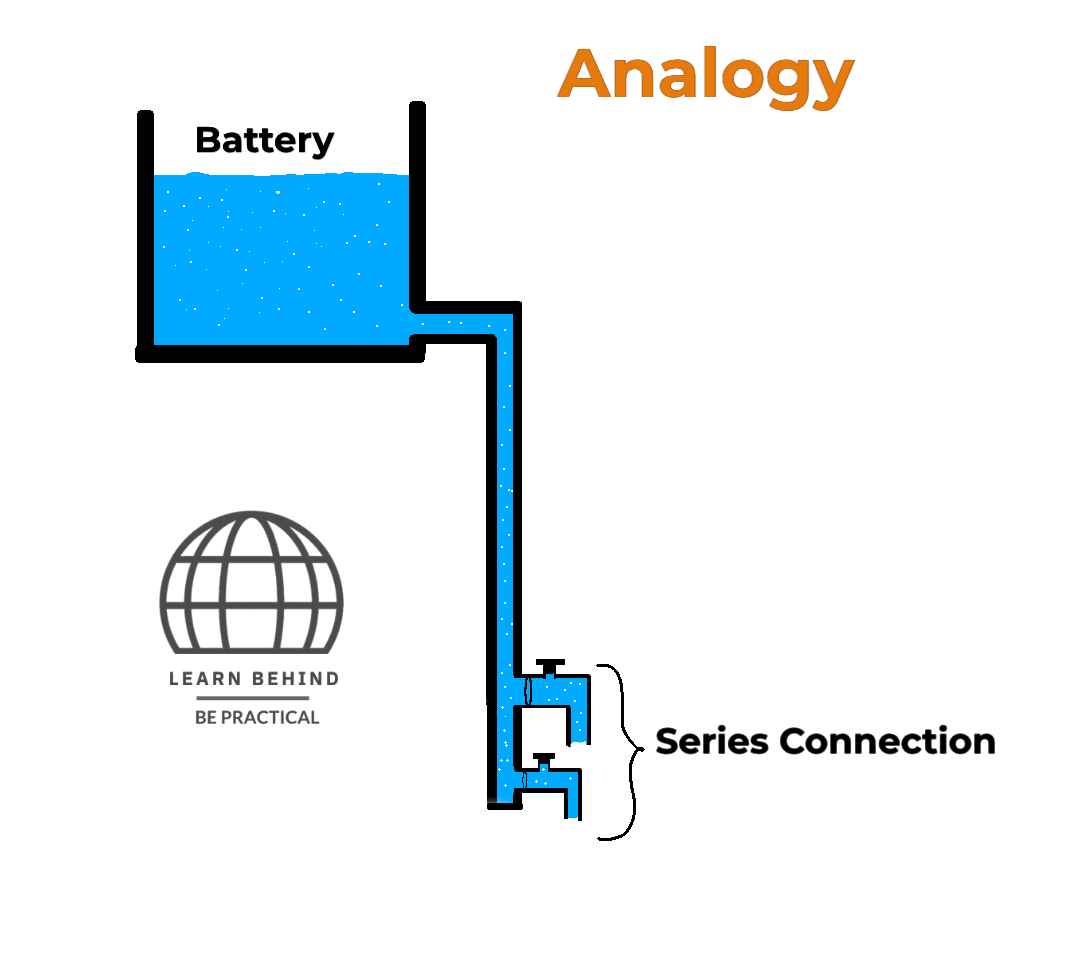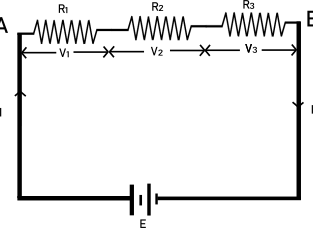Home
Tutorial's
Image collection
Calculator
Projects
MCQ's
3d Models
Invention Hub
How it works
Download Our app
(Last updated on 12-09-2024)
Module 13: Series Connection
Resistors in series connection:
If the same current flows through each resistor, then they are said to be connected in series. In series, there is only one path for the current to flow, and the resistance is connected end to end, i.e., the first resistor's second end is connected to the second resistor's first end, as shown in figure.

Imagine as previous modules assume a water pipe as a conductor,, water as a current, a water tank as a powerhouse, and water pressure as voltage. In a series connection, assume two water taps are connected to the outlet pipe of the tank. When these two taps are open, then automatically the pressure is reduced, the same as in a in a series connection in a circuit, but water never divided means it never drains fast.
Consider three resistors R1 , R2, R3,which are connected in series across a battery as shown in the figure. Then the total resistance RT is given by

According to Ohm’s Law
Here the voltage is dividing across each resistor, then
Voltage drop across each resistance R1, V1 = I R1
Voltage drop across each resistance R2, V2 = I R2
Voltage drop across each resistance R3, V3 = I R3
The applied voltage is equal to the sum of individual voltage drops across each resistors because the voltage is dividing.
V = V1+ V2+ V3
We know that V=IR
= IR1+ IR2 + IR3 (In series current flow is same for three resistors)
=I(R1 +R2 +R3)
V/I= R1 +R2 +R3
RT = R1 + R2+ R3 (V/I=R)
From the above formula, you can conclude that the total or equivalent resistance is equal to the sum of the individual resistances connected in series.
Characteristics of Series circuit:
(i) Same current flows through each resistance.
(ii) The applied voltage is equal to the sum of the individual voltage drops. V=V1 + V2 + V3
(iii) The total resistance is equal to the sum of individual resistances.
(iv) Different resistances have their individual voltage drops.
(v) The voltage drop across each resistances is directly proportional to its resistance.
(vi) In series connection voltage is divided across each load and current is same.
Application of Series connection:
All current controlled devices are connected series For example a fuse is connected in series to the circuit because if the current is increase more than the threshold it will be cut off and also the rheostat are also connected in series to control the current in machines.
Why we are using parallel connection in Home appliances? Why not series connection ?
All appliances are connected in parallel in home why because
(i) In a series connection, the voltage is dividing across the loads, and in a home, all appliances consume 230 volts; if the voltage is decreased, it won't run.
(ii) In a series connection, if one appliance is damaged, the remaining appliances won't work until it is replaced.
(iii) In a parallel connection, there is no voltage-dividing problem or series shutdown problem.
